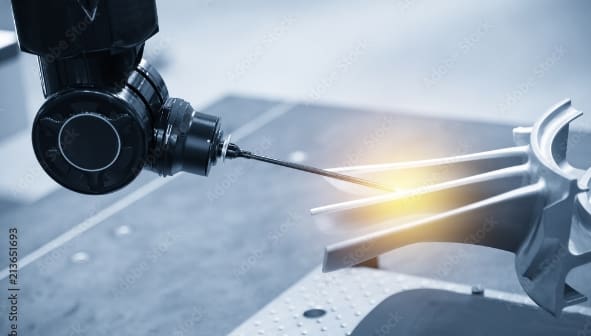Understanding birefringence provides a roadmap for improving the quality of optical parts.
By Douglas C. Mark, Hinds Instruments, Inc.
Summary: Understanding the residual stress birefringence characteristics of both individual components and bulk materials is critical for researchers, quality control professionals and factory managers responsible for products ranging from precision optics to high volume consumer devices.
Residual stress in optical transparent materials often manifests itself as a polarization-dependent optical property, such as linear birefringence. Birefringence, or the double refraction of light, is a common natural characteristic of many crystals and other anisotropic materials such as calcite and mica. Isotropic materials such as fused silica, commercial glass (including both float glass and fusion glass) and many plastics have a uniform index of refraction in all directions and do not exhibit native birefringence. However, whenever mechanical stress is applied to isotropic materials, residual birefringence is generated. This birefringence is linearly-proportional to the stress in the material. If the material thickness and stress-optic coefficient of the material are known, the birefringence can be used to calculate the residual stress, which is typically stated in units of pressure, such as MPa or psi. Because the relationship is linear, birefringence magnitude can be substituted for actual stress (i.e. high birefringence = high residual stress).
Many factors contribute to birefringence in optical materials. For example, any of the following conditions can cause stress birefringence: applied external pressure (from mounting hardware, etc.); primary manufacturing processes (material process variables); secondary manufacturing processes (grinding, cutting, heating, bending, etc.); handling and impact damage (chips, cracks, scratches); bubbles or inclusions in the material; process-induced temperature differentials; injection pressures in plastic molding processes; and the stretch rate and processing temperature in plastic film production. Observing and measuring birefringence in manufactured parts can reveal a lot about how the part may perform in an application. For example, high stress in thin display glass may result in poor material yield due to fracturing during processing or handling. In some cases, high stress can degrade the optical performance of finished parts (e.g., excessive light bleed in polarization-dependent thin glass display applications). In precision polarization optics, high stress and high birefringence can disrupt the light passing through the optic and change the polarization state of the light. In lithographic applications, this can lead to poor quality images.
Birefringence can be observed and measured in many ways. Extremely high levels of birefringence can be observed with the naked eye. Observation is improved by the use of a polariscope, in which a sample is placed between two crossed polarizers and a backlight. In this arrangement, color shifts can be observed that are proportional to the magnitude of the birefringence in the sample. The polariscope is a good qualitative solution for observing large magnitude stress patterns in optical materials. It is commonly used in mineralogy to identify specific gems and minerals. It requires a skilled user who understands the relationship between observed color shifts and birefringence, i.e., optical retardation per unit of thickness (typically, nm/cm). In addition, an accurate observation of color shifts requires a precise orientation of the sample between the polarizers. This technique is generally subjective, and relies heavily on the trained observation skills of the individual operator. It also relies on the operator’s ability to accurately and consistently apply other reference tools, such as a Michel-Lévy interference color chart.
By contrast, a more quantitative approach to measuring the birefringence magnitudes present in samples will provide information that is much more useful and actionable for quality control professionals and factory managers. Quantitative measurement techniques reveal actual birefringence values, which permit the development of documented QC procedures. These can include unambiguous meet/exceed/reject targets, as well as threshold values used by optical engineers developing complex optical systems. There are several ways to obtain a quantitative characterization of birefringence in a sample. One system, the Hinds Instruments Exicor® birefringence measurement system, reports birefringence magnitude (nm/cm) and fast axis orientation (°). This system is not dependent on the orientation of the sample relative to the machine, and makes precise and repeatable measurements that are orders of magnitude lower than the most highly-skilled user would be able to detect with the aid of a polariscope (0.001nm optical retardation resolution). When coupled with motion stages (as in the Exicor150AT), the Exicor Birefringence measurement system quickly provides a map of both the magnitude and the orientation of birefringence in a sample. Users can select system wavelengths from DUV to NIR to match the transmission characteristics of particular samples.
Hinds Instruments, Inc. is the world leader in developing and supplying polarization modulation technology for a broad range of applications. With 40+ years of polarization modulation experience, Hinds Instruments’ PEM-based solutions are proven tools for laboratory and research applications. Hinds’ family of products includes modulators, Stokes polarimeters, Mueller matrix polarimeters, MOKE measurement systems and Exicor® birefringence measurement systems. For more information, please contact Hinds Instruments.
